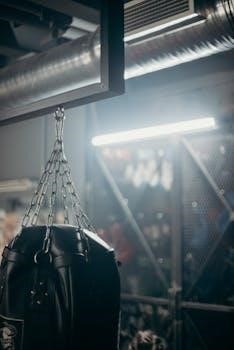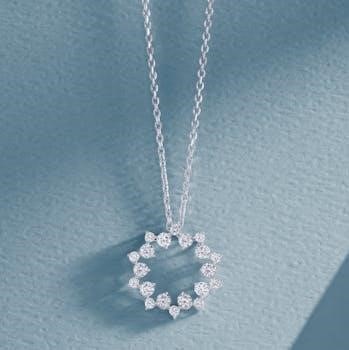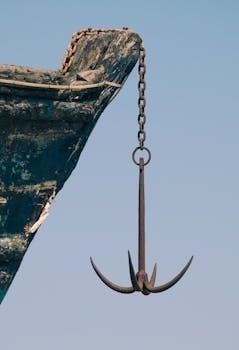DRZ400 Cam Chain and Guide⁚ A Comprehensive Guide
This guide delves into the importance of the DRZ400 cam chain system. It will explore signs of wear, available options, and the replacement procedure. Furthermore, common problems and solutions will be discussed, accompanied by helpful maintenance suggestions to keep your DRZ400 running smoothly.
The DRZ400 cam chain system is a vital component responsible for synchronizing the crankshaft and camshafts. This synchronization ensures proper valve timing, which is essential for optimal engine performance. The system comprises the cam chain, sprockets, and tensioner, all working in harmony to maintain precise timing. A critical element within this system is the cam chain guide, which plays a crucial role in maintaining chain alignment and preventing excessive wear.
Understanding the function and maintenance of the cam chain system is paramount for DRZ400 owners. Neglecting this system can lead to significant engine damage. Regular inspection and timely replacement of worn components, such as the cam chain and guide, are necessary. Furthermore, issues like chain touching the guide, must be addressed quickly. This preventative maintenance will ensure the longevity and reliability of your DRZ400’s engine.
Importance of the Cam Chain Guide
The cam chain guide in the DRZ400 engine plays a pivotal role in maintaining the integrity and functionality of the cam chain system. Its primary function is to provide a smooth, low-friction surface for the cam chain to ride upon, preventing excessive wear and ensuring proper chain alignment. Without a functioning guide, the chain could vibrate excessively, leading to premature wear of the chain itself, the sprockets, and potentially causing damage to other engine components. The guide ensures that the cam chain maintains proper tension and prevents it from slapping against other engine parts.
Furthermore, the cam chain guide contributes to reducing engine noise and maintaining consistent valve timing. A worn or damaged guide can lead to rattling or ticking noises emanating from the engine, which is often the first sign of a problem. By preventing excessive chain movement, the guide helps maintain precise valve timing, ensuring optimal engine performance and fuel efficiency. Regular inspection and timely replacement of the cam chain guide are crucial for the longevity and reliable operation of the DRZ400 engine.
Recognizing Symptoms of a Worn Cam Chain Guide
Identifying a worn cam chain guide in your DRZ400 early is crucial for preventing extensive engine damage. Several telltale signs can indicate that the guide is nearing the end of its lifespan and requires attention. One of the most common symptoms is an unusual rattling or ticking sound emanating from the engine, especially noticeable at idle or during low-load conditions. This noise often intensifies as the engine warms up and may be more pronounced on one side of the engine.
Another indicator of a worn cam chain guide is excessive cam chain noise at higher RPMs. If you notice a distinct slapping or whirring sound coming from the top end of the engine as you increase the throttle, it could be a sign that the chain is vibrating excessively due to a degraded or broken guide. Additionally, visual inspection of the guide during valve adjustments can reveal cracks, wear grooves, or even missing pieces. Ignoring these symptoms can lead to further damage, including cam chain failure, valvetrain issues, and potentially catastrophic engine damage. Prompt diagnosis and replacement of the worn guide are essential.

Rattling or Ticking Noises
One of the primary indicators of a failing cam chain guide in your DRZ400 is the presence of unusual rattling or ticking noises originating from within the engine. This symptom often manifests subtly at first, gradually becoming more pronounced as the wear on the guide increases. The sound is typically most noticeable during idle or low-load engine operation when ambient noise is minimal, allowing you to better discern any abnormal sounds coming from the engine. Listen carefully, paying close attention to the top end of the engine, where the cam chain and its associated components are located.
The rattling or ticking sound arises from the cam chain slapping against the worn or damaged guide. As the guide loses its integrity, it fails to provide adequate support and tension to the chain, resulting in increased slack and vibration. This can cause the chain to make contact with other engine components, creating the characteristic rattling or ticking noise. Furthermore, the sound may change in intensity or frequency depending on the engine’s temperature, load, and RPM. If you suspect a worn cam chain guide based on this symptom, further investigation is warranted to prevent potential engine damage.
Excessive Cam Chain Noise at Higher RPMs
Another telltale sign indicating potential issues with your DRZ400’s cam chain system is the presence of excessive cam chain noise, particularly noticeable at higher engine RPMs. While some mechanical noise is expected, a distinct increase in rattling, slapping, or whining sounds as the engine revs higher could point to a worn cam chain or a failing cam chain guide. This symptom arises because, at elevated RPMs, the cam chain experiences greater stress and velocity, exacerbating any existing slack or wear within the system.
A worn cam chain guide or excessive slack in the chain allows the chain to vibrate and impact surrounding components with increased force, creating more pronounced noise. The automatic cam chain tensioner (ACCT) may also struggle to maintain proper chain tension at higher RPMs, especially if it’s nearing the end of its adjustment range or is malfunctioning. As the engine speed increases, the increased noise may become more difficult to distinguish from the overall engine sound, so it’s important to listen carefully for any unusual or intensifying sounds. Addressing this issue promptly can prevent further damage and ensure optimal engine performance.
Checking Cam Chain Wear
Determining the extent of cam chain wear in your DRZ400 is crucial for maintaining engine health and preventing potential damage. One method involves visually inspecting the cam chain tensioner’s extension. If the automatic cam chain tensioner (ACCT) is extended near its maximum limit, it indicates significant chain stretch, signaling the need for replacement. Another approach requires removing the motor side cover to observe the cam chain guide’s fitment and overall chain condition.
Alignment marks on the cam sprockets can also be used to gauge chain wear; as the chain stretches over time, these marks will deviate from their original positions. For a more precise assessment, the cam chain’s pitch length can be measured. Consulting your DRZ400 service manual will provide the specific measurement guidelines and acceptable tolerance ranges. When checking, also examine the chain for any signs of damage, such as stiff links or excessive corrosion, which can accelerate wear. Regularly checking these indicators allows for proactive maintenance, preventing costly repairs and ensuring the longevity of your engine.
Automatic vs. Manual Cam Chain Tensioners (ACCT vs. MCCT)
The DRZ400 utilizes a cam chain tensioner to maintain proper tension on the cam chain, preventing excessive slack and ensuring accurate valve timing. Two primary types of tensioners exist⁚ Automatic Cam Chain Tensioners (ACCT) and Manual Cam Chain Tensioners (MCCT); ACCTs are designed to automatically adjust chain tension based on oil pressure, offering convenience but also presenting potential drawbacks.
MCCTs, on the other hand, require manual adjustment by the user. Proponents of MCCTs argue that they offer more precise control over chain tension, preventing over-tensioning, a common issue with ACCTs that can lead to premature wear of the cam chain and guide. However, MCCTs necessitate periodic adjustments and a thorough understanding of proper tensioning techniques to avoid under-tensioning, which can also cause engine damage. Choosing between ACCT and MCCT depends on individual preferences, riding style, and mechanical expertise. Regular inspection and maintenance of either type are essential for optimal engine performance and longevity.
Drawbacks of Automatic Cam Chain Tensioners (ACCT)
While Automatic Cam Chain Tensioners (ACCT) offer the convenience of self-adjustment, they are not without their drawbacks, especially in the DRZ400. A primary concern is the tendency of ACCTs to over-tension the cam chain. This excessive tension can place undue stress on the cam chain guide, leading to premature wear and potential failure; The hydraulic mechanism of ACCTs, relying on oil pressure, can become overly aggressive, particularly at higher RPMs, exacerbating the issue.
Furthermore, some riders have reported inconsistent performance from ACCTs, with instances of insufficient tension at lower RPMs, resulting in cam chain rattle. The “automatic” nature of ACCTs also removes a degree of control from the rider, making it difficult to fine-tune the tension to specific engine conditions or preferences. For riders seeking maximum control and longevity of their cam chain system, the limitations of ACCTs often lead them to consider alternative solutions like Manual Cam Chain Tensioners (MCCT).
Benefits of Manual Cam Chain Tensioners (MCCT)
Manual Cam Chain Tensioners (MCCTs) offer several advantages over their automatic counterparts, particularly for DRZ400 owners seeking greater control and reliability. The primary benefit of an MCCT is the ability to precisely adjust cam chain tension. This allows riders to fine-tune the tension to the optimal level, avoiding both over-tensioning, which can cause premature wear on the chain and guides, and under-tensioning, which can lead to rattling and potential timing issues.
MCCTs eliminate the reliance on oil pressure, a common source of problems with ACCTs, providing consistent tension regardless of engine RPM. Furthermore, MCCTs offer increased durability and longevity compared to ACCTs. Their simple, mechanical design reduces the risk of failure, providing peace of mind for riders who demand reliability. Finally, the ability to manually adjust the tension allows riders to compensate for cam chain stretch over time, extending the life of the chain and guides.
Replacing the Cam Chain Guide

Replacing the cam chain guide on a DRZ400 is a crucial maintenance task that can prevent serious engine damage. Begin by removing the valve cover and inspecting the existing guide for wear, cracks, or damage. Next, carefully remove the camshafts, ensuring to mark their orientation for proper reinstallation. Accessing the cam chain guide often requires removing the cylinder head cover, which involves disconnecting hoses and electrical connections.
Once the cover is removed, you can access the worn cam chain guide. Some guides are held in place by screws, which may be difficult to remove if they are stripped. In such cases, consider using specialized tools to extract the damaged screws. Install the new cam chain guide, ensuring it is properly seated and secured. Reassemble the cylinder head cover, camshafts, and valve cover, following the reverse order of disassembly. Finally, adjust the valve clearances and cam chain tension to the manufacturer’s specifications.
Determining Cam Chain Wear Method
Determining cam chain wear on a DRZ400 is essential for maintaining engine health. Several methods can be employed to assess the chain’s condition. One common approach involves checking the Automatic Cam Chain Tensioner (ACCT) extension. If the ACCT is fully extended, it indicates significant chain stretch, warranting replacement. Another method involves measuring the cam chain’s pitch length. Refer to the service manual for the specified pitch length and compare it to the measured length. A stretched chain will exceed the specified limit.
Visual inspection of the cam chain guides can also provide clues about chain wear. If the guides are excessively worn or damaged, it suggests that the chain has been rubbing against them due to stretching. Additionally, check the alignment marks on the cam sprockets. As the cam chain wears, the cams may rotate forward, causing the alignment marks to deviate from their intended positions. Note any unusual noises emanating from the engine, such as rattling or slapping sounds, as these can indicate a worn cam chain. Combining these methods will give a comprehensive assessment.
Swingarm Chain Guide Wear
Besides the cam chain and its guide, another area of concern for DRZ400 owners is the swingarm chain guide. This guide, located on the swingarm, prevents the chain from rubbing directly against the metal, which would cause significant wear to both the chain and the swingarm. The DRZ400 is known to be prone to swingarm chain guide wear, particularly with high mileage. Regular inspection of the swingarm chain guide is crucial.

Look for signs of excessive wear, such as deep grooves or thinning of the plastic material. If the chain starts to rub directly against the swingarm, it’s a clear indication that the guide needs replacement. Neglecting this issue can lead to costly repairs, as a worn swingarm can compromise the bike’s handling and structural integrity. Replacing the swingarm chain guide is a relatively simple and inexpensive task compared to repairing or replacing a damaged swingarm. Therefore, proactive maintenance in this area is highly recommended to preserve the longevity of your DRZ400.
Cam Chain Tension Adjustment
Proper cam chain tension is essential for optimal engine performance and longevity in the DRZ400. The tension ensures accurate valve timing and prevents excessive wear on the cam chain, guides, and sprockets. There are two primary methods for maintaining cam chain tension⁚ automatic cam chain tensioners (ACCTs) and manual cam chain tensioners (MCCTs). ACCTs are designed to automatically adjust the tension as the chain stretches over time. However, they are known to sometimes apply excessive tension, leading to premature wear.

MCCTs, on the other hand, require manual adjustment. This allows for more precise control over the tension, but it also necessitates periodic checks and adjustments to ensure it remains within the proper range. When adjusting an MCCT, it’s crucial to follow the manufacturer’s instructions carefully. Over-tightening the chain can cause undue stress on engine components, while under-tightening can result in rattling noises and potential timing issues. Regular monitoring and adjustment, according to the recommended maintenance schedule, are vital for maintaining optimal cam chain tension and preventing engine damage.
Maintenance Tips for DRZ400 Cam Chain
Maintaining the DRZ400’s cam chain is crucial for engine reliability and preventing costly repairs. Regular oil changes with high-quality oil are paramount, as clean oil lubricates the cam chain and reduces friction. Inspect the cam chain tensioner regularly, whether it’s an automatic or manual type. For ACCTs, listen for unusual noises that may indicate failure or over-extension. For MCCTs, periodically check and adjust the tension according to the manufacturer’s recommendations.
Pay close attention to any rattling or ticking sounds emanating from the engine’s top end, especially at higher RPMs, as this could signify a worn cam chain or guide. Consider replacing the cam chain and guides as preventative maintenance at recommended intervals, especially if the bike has accumulated significant mileage or experienced harsh riding conditions. When replacing the chain, always inspect the cam sprockets for wear and replace them if necessary. Furthermore, ensure that the swingarm chain guide is in good condition to prevent chain rub and premature wear on both the chain and swingarm. By adhering to these maintenance tips, you can prolong the life of your DRZ400’s cam chain and maintain optimal engine performance.
Common Problems and Solutions
One prevalent issue with the DRZ400 is excessive cam chain noise, often manifesting as a rattling or ticking sound. This is frequently attributed to a worn cam chain, a failing automatic cam chain tensioner (ACCT), or worn cam chain guides. A common solution involves replacing the ACCT with a manual cam chain tensioner (MCCT), which allows for more precise tension control and prevents over-tensioning. However, it’s crucial to ensure proper MCCT adjustment to avoid under-tensioning, which can also lead to chain slap and wear.
Another problem is premature wear of the cam chain guides, caused by excessive tension from the ACCT or general wear and tear. Replacing the worn guides is essential, and some owners find that aftermarket guides offer improved durability. Stripped screws on the front cam chain guide can pose a challenge during replacement; using a JIS screwdriver or applying penetrating oil can aid in removal. Additionally, swingarm chain guide wear is a common issue, leading to the chain rubbing directly against the swingarm. Regular inspection and timely replacement of the swingarm chain guide can prevent costly damage. Always check the engine oil for any signs of metal shavings, which could indicate severe cam chain or guide wear.
